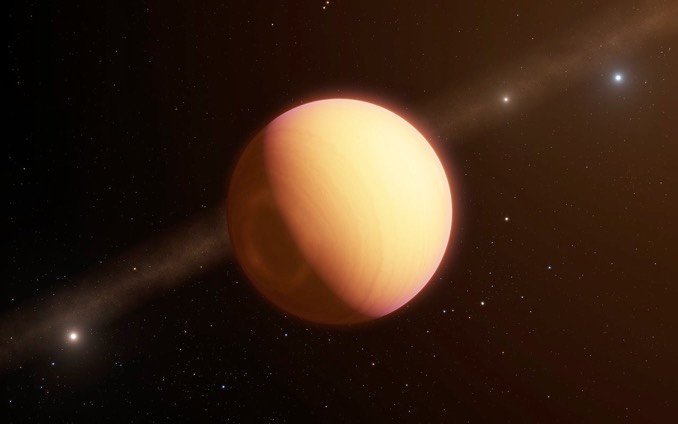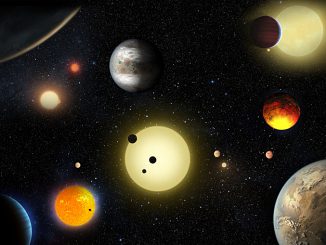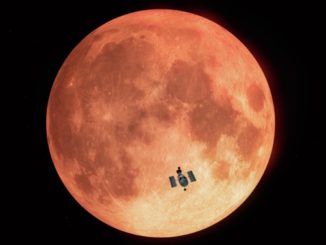
Astronomers using the four members of the European Southern Observatory’s Very Large Telescope have made the first direct observation of a planet orbiting another star using optical interferometry.
By combining the light from the four VLT telescope units, and using the sensitive GRAVITY instrument to precisely disentangle the light of the planet from its parent star, the research team found a complex atmosphere of iron and silicates suspended in a planet-wide storm.
Known as HR8799e, the planet is a so-called “super Jupiter” with a temperature of roughly 1,000 degrees C. While the hellish world was discovered in 2010, the GRAVITY measurements provided a spectrum 10 times more detailed than earlier observations, revealing at least some of the chemical constituents of the exoplanet’s atmosphere.
“Our analysis showed that HR8799e has an atmosphere containing far more carbon monoxide than methane, something not expected from equilibrium chemistry,” said team leader Sylvestre Lacour, a researcher at the Observatoire de Paris and the Max Planck Institute for Extraterrestrial Physics.
“We can best explain this surprising result with high vertical winds within the atmosphere preventing the carbon monoxide from reacting with hydrogen to form methane.”
The observations revealed the presence of clouds of iron and silicate dust. Given the excess of carbon monoxide, the researchers concluded the planet must be engulfed in a violent global storm.
“Our observations suggest a ball of gas illuminated from the interior, with rays of warm light swirling through stormy patches of dark clouds,” said Lacour. “Convection moves around the clouds of silicate and iron particles, which disaggregate and rain down into the interior. This paints a picture of a dynamic atmosphere of a giant exoplanet at birth, undergoing complex physical and chemical processes.”
HR8799e is younger, about 30 million years old, and much more massive than any planet in Earth’s solar system.
A paper describing the GRAVITY observations appears in a letter to the journal Astronomy and Astrophysics. The paper concludes by suggesting ESO’s upcoming Extremely Large Telescope, built around a huge 39.3-metre (130-foot) segmented mirror, will be able to use a similar technique to obtain even more spectacular results.
“The idea that an interferometer can resolve the surface of exoplanets, giving radius and resolving clouds patchiness, is now becoming more plausible,” the paper concludes. “However, it would require an interferometer with baselines on the order of 10 km. This could be a goal for ESO after ELT construction.”



